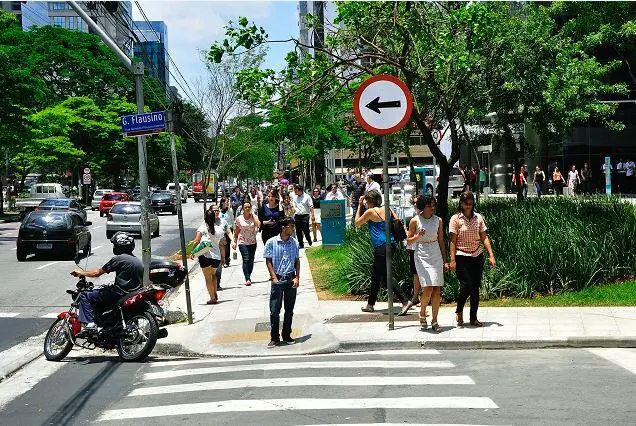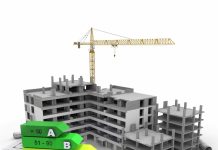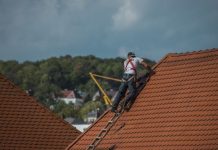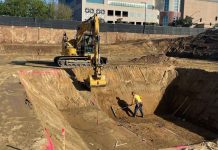Pedestrian wind comfort can be improved when horizontally incoming airflow passes through trees in the urban areas. This is according to recent research carried out in the Department of Environmental Atmospheric Sciences, Pukyong National University, Busan, Republic of Korea, and published in Elsevier – Sustainable Cities and Societies. In the study, the authors applied computational fluid dynamics incorporating tree drag parameters to evaluate how trees improved the wind comfort of pedestrians.
The way wind is perceived at the ground level depends on a lot of factors such as wind direction, wind speed, obstacles, and many other parameters. This experience affects pedestrians’ comfort and safety, and can impact the financial returns or economic viability of an area. According to Lawson-based wind comfort criterion, wind speed exceeding 10 m/s can be uncomfortable for pedestrians at the ground level, while wind speed above 15 m/s is outrightly dangerous. Other wind comfort criteria exist such as that proposed by Davenport.
Trees are known to function as porous obstacles to airflow, and they eventually affect wind speed and direction. The presence of high rise buildings and urban densification has been observed to reduce airflow in city centers and may lead to increased urban heat and poor dispersal of pollutants. However, the effect of wind on tall buildings can amplify wind pressure in the surroundings due to issues like vortex shedding, reverse flow, channeling effects, etc. This can lead to discomforting wind effects on pedestrians. Therefore, by applying computational fluid dynamics model (CFD) with tree drag parameterization scheme, the researchers were able to evaluate the effect of trees on pedestrian wind comfort in Pukyong National University campus. The CFD model used in the study was verified with field observations.
The CFD model used in the study was based on Reynolds-averaged Navier–Stokes (RANS) equations and assumes a three-dimensional, non-rotating, non-hydrostatic, incompressible airflow system. Turbulence was parameterized using the renormalization group (RNG) k-ε turbulence closure scheme. Tree drag terms were introduced into the momentum, turbulent kinetic energy (TKE), and TKE dissipation rates equations to account for the loss of airflow pressure due to winds.
The target area for the research was the Pukyong National University (PKNU) campus (See Fig. 1a) which is located in the downtown area and is surrounded by commercial and residential areas. PKNU boasts relatively high vegetation density for student recreational spaces and ecologically friendly landscaping within the campus. Regions A and B (Fig. 1b) contains a dense forest of trees taller than 10–15 m. Several tree species are planted along the PKNU boundary (region C in Fig. 1b).
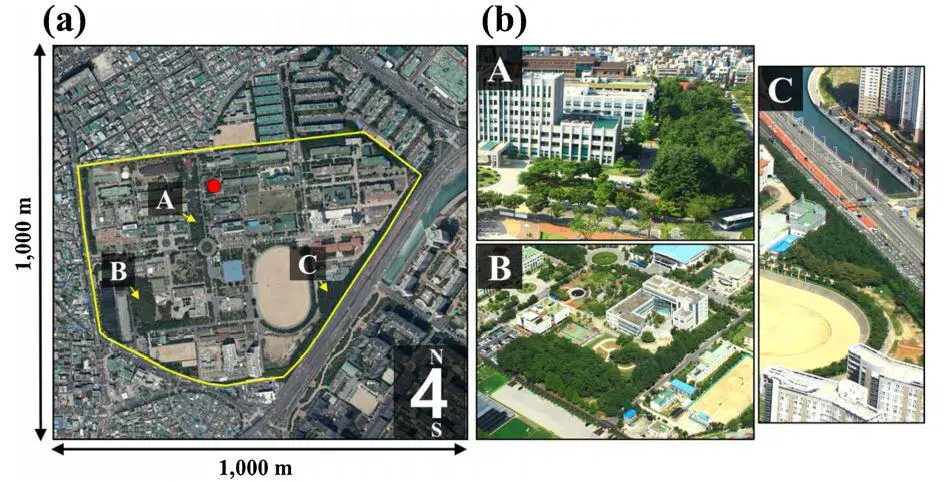
and C in Fig. 1a) (from www.pknu.ac.kr). The red dot in (a) indicates the location of automated weather station (AWS) 942. (Kang et al, 2020)
The authors adopted the wind comfort criteria proposed by Isyumov and Davenport (1975), which distinguish four sensory levels (good, tolerable, unpleasant, and dangerous) for four categories of human activity or activity location (Table 1). These sensory levels are determined by the Beaufort wind force scale (BWS), represented by wind speeds at 10 m above the ground level. To evaluate wind comfort at the pedestrian level (z =1.75 m), they used the BWS values converted into pedestrian height.
Table 1: Sensory levels in terms of suitability for outdoor activities, represented by the Beaufort wind force scale (BWS) (Isyumov & Davenport, 1975).
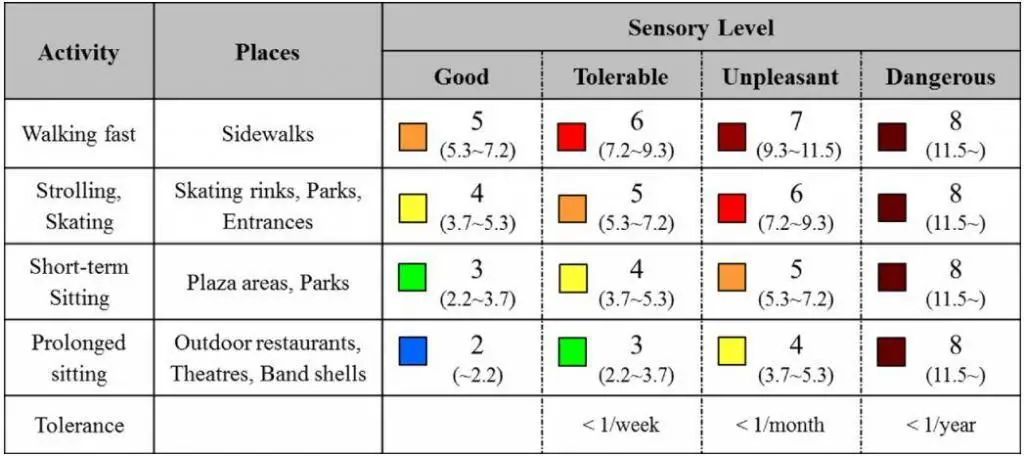
From the study, poor wind comfort for outdoor activities (BWSs ≥ 4) was observed in the areas without trees, mainly around the edges of buildings, in the windward regions of buildings, in the spaces between buildings, and in wide, unobstructed areas. This was attributed to venturi effects between the spaces in buildings. In the case of where trees were present, the BWS values declined by one to three levels, improving the overall level of wind comfort within the PKNU campus.
The highest ABWS and TBWS values (≥ 4) were observed near the southeast perimeter of the PKNU campus, where a 10-lane road is located. By contrast, the lowest ABWS and TBWS values (≤ 3) were observed in the southwest and northwest of the campus. Where trees were present, the overall wind speeds inside the campus were reduced due to drag.
The authors concluded that tree arrangement can reduce wind speeds in the lee of the trees by more than half and proposed that trees should be planted at 90° to the dominant wind direction. The presence of trees decrease wind speeds. However, because wind speeds can increase in surrounding areas without trees, the effects of trees on strong winds in such areas should be assessed.
Reference
Kang G., Kim J., Choi W. (2020): Computational fluid dynamics simulation of tree effects on pedestrian wind comfort in an urban area. Sustainable Cities and Societies 56 (2020)102086. https://doi.org/10.1016/j.scs.2020.102086
Disclaimer:
Contents of this research article have been shown on www.structville.com because it is an open access article under creative commons licence (http://creativecommons.org/licenses/BY/4.0). All other rights belong to the authors and Elsevier.

